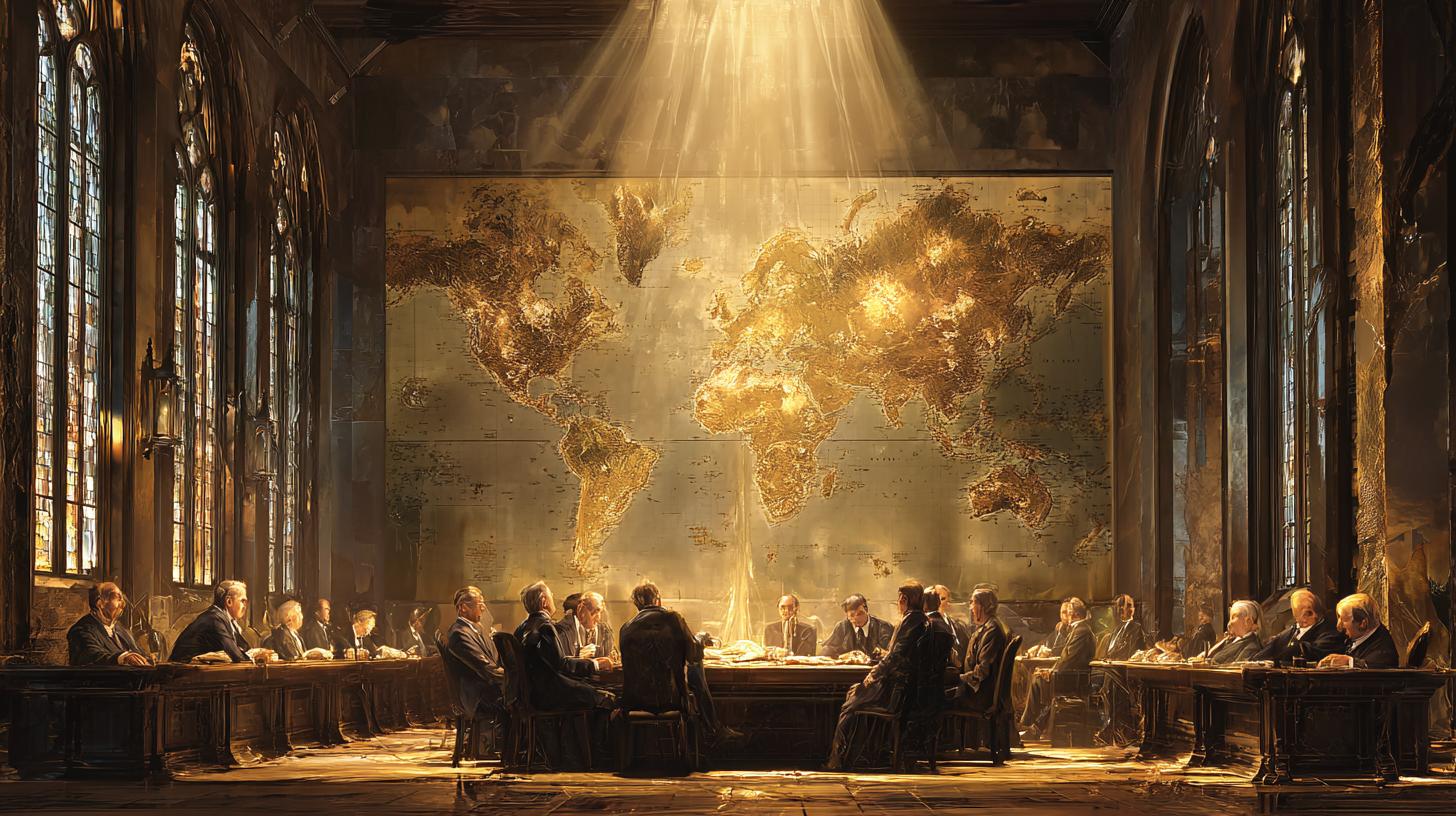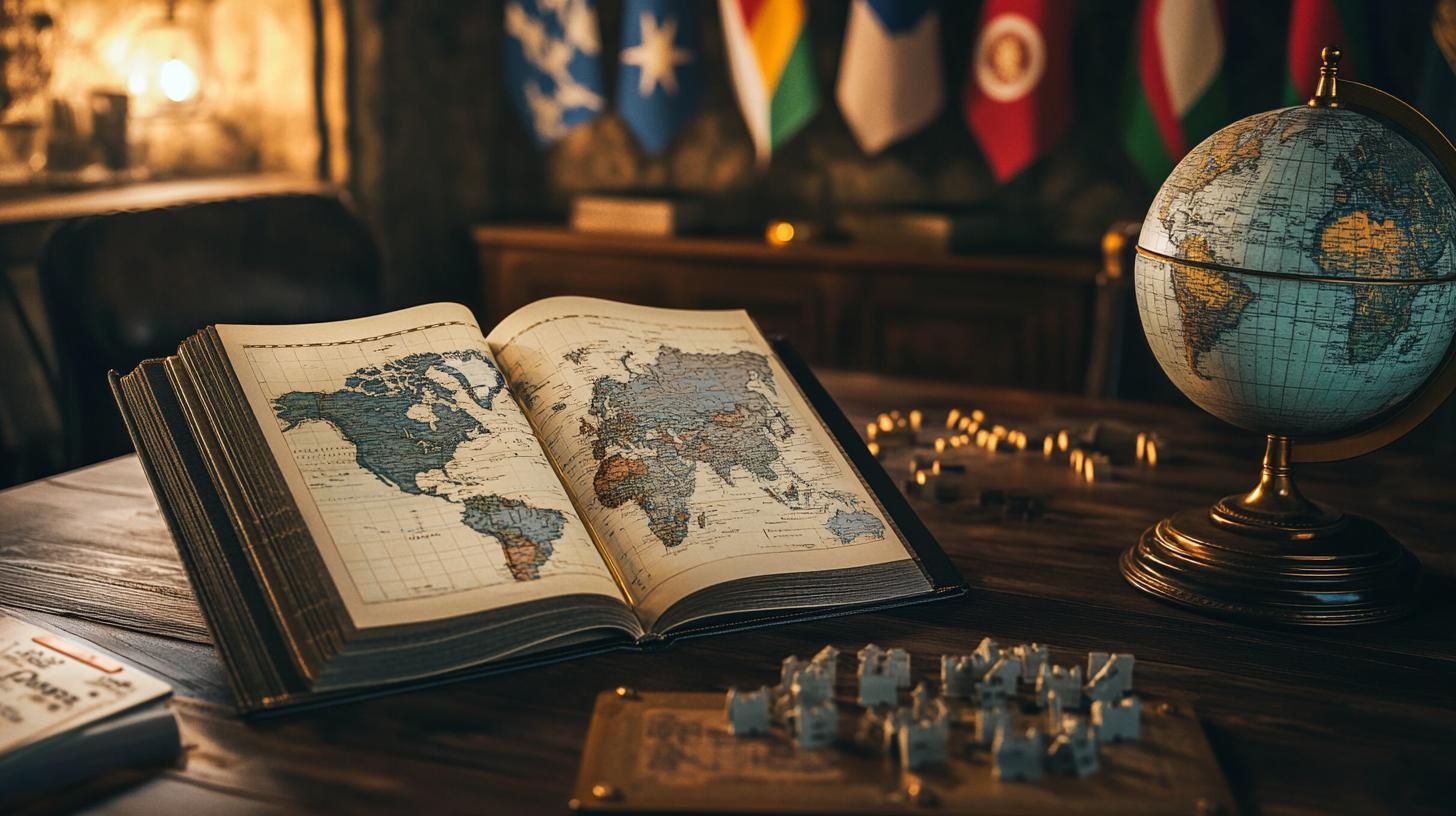Unlocking Progress: The Ultimate Diplomacy Stalemate Breaker Guide
In a world filled with conflicting interests and tug-of-war negotiations, finding a way to unlock seemingly unbreakable diplomatic impasses is both an art and a science. Whether you’re a seasoned envoy or an emerging international relations enthusiast, mastering a diplomacy stalemate breaker can transform deadlocked talks into breakthrough wins. This article dives deep into proven strategies, actionable tips, and inspiring case studies that illuminate how to bypass roadblocks and pave the way for lasting agreements. We will explore the historical roots of diplomatic stalemates, reveal innovative techniques for building mutual trust, and demonstrate how subtle shifts in approach can yield remarkable results. Prepare to enhance your negotiation toolkit with expert insights, avoid common pitfalls, and discover the power of creative, human-centered diplomacy that truly moves the needle on global challenges. Get ready to step beyond traditional diplomatic tactics and embrace a decisive pathway that dismantles gridlock and fosters collaboration.
Understanding the Root Causes of Diplomatic Deadlocks
Diplomatic deadlocks often stem from deeply entrenched positions, where parties refuse to concede ground on pivotal issues. These standoffs can escalate as mistrust builds and communication channels narrow or shut entirely. By tracing the anatomy of a stalemate, negotiators gain a clearer map of obstacles and opportunities. Identifying the underlying motivations—whether strategic, economic, or cultural—is crucial for designing an effective diplomacy stalemate breaker. This section explores how historical grievances and power dynamics intersect, creating a perfect storm for immobility in talks. Armed with this knowledge, readers can better anticipate roadblocks and prepare tailored interventions to revitalize stalled negotiations.
Historical Context
Throughout history, diplomatic impasses have reshaped the global order, from the Cold War’s era of bipolar tension to modern territorial disputes in volatile regions. Examining past stalemates, such as the Olympic Truce violations of ancient Greece or the protracted talks over nuclear disarmament, reveals recurring patterns in negotiation breakdowns. These case examples demonstrate that without timely, creative interventions, stalemates can calcify into toxic deadlock lasting decades. A robust diplomacy stalemate breaker approach borrows lessons from successful breakthroughs, repurposing them for today’s complex geopolitical landscape. By understanding what once worked—and why—diplomats can adapt proven tactics to address contemporary challenges.
Common Triggers of Stalemate
Several triggers can propel negotiations into a standstill, including rigid red lines, asymmetric information, and external pressure from domestic constituencies or allied actors. Ego and zero-sum thinking often exacerbate tensions, leading negotiators to view compromise as weakness. Media sensationalism and public posturing further complicate candid dialogue by raising the stakes of any apparent concession. Recognizing these triggers allows negotiators to preemptively defuse tension, paving the way for a diplomacy stalemate breaker strategy that redirects conversation towards shared goals. Proactively managing emotions and expectations can dramatically reduce the likelihood of full-blown impasse.
Why a Diplomacy Stalemate Breaker Matters
Injecting a stalemate breaker mechanism into diplomatic processes revitalizes stalled talks and builds momentum toward resolution. By offering a structured yet flexible framework, mediators can move parties beyond reactive postures into collaborative problem-solving mode. Creating space for creativity and reframing issues generates mutual buy-in and fosters an environment of constructive dialogue. A well-timed intervention can prevent costly escalations, such as economic sanctions spiraling out of control or minor skirmishes igniting broader conflict. Ultimately, mastering the diplomacy stalemate breaker empowers negotiators to unlock value, reinforce trust, and sustain peace.
- Rebuilds trust between adversarial parties
- Encourages transparent communication
- Introduces innovation in negotiation tactics
- Prevents escalation and secures stable agreements
Key Strategies to Act as a Diplomacy Stalemate Breaker
Deploying the right combination of active listening, creative framing, and back-channel diplomacy can shatter even the toughest deadlock. Each strategy should be tailored to the specific context, cultural norms, and power dynamics at play. Flexibility is paramount; what works in one negotiation may falter in another. This section outlines actionable tips that serve as the building blocks for any diplomacy stalemate breaker toolkit. By integrating these methods, you’ll transform rigid standstills into dynamic opportunities for progress.
Active Listening and Empathy
True active listening goes beyond nodding—it involves paraphrasing concerns, validating emotions, and asking open-ended questions that uncover latent interests. Empathy bridges gaps by acknowledging each side’s fears and aspirations, creating a foundation of mutual respect. When negotiators feel heard, they become more willing to explore alternative solutions. Practicing empathy also diffuses defensive postures, allowing a diplomacy stalemate breaker process to gain traction. Over time, this approach fosters deeper rapport and smooths the path toward consensus.
Leveraging Back-Channel Communications
Informal, discreet communication channels can reduce political risk and foster candid exchanges away from public scrutiny. Back-channel diplomacy often uncovers creative compromises unpalatable in formal settings due to political optics. Skilled mediators use these private lines to test proposals, gauge reaction, and build preliminary alignment. By progressively narrowing differences behind the scenes, negotiators can present a united framework in official talks, accelerating progress. Incorporating back-channel tactics into your diplomacy stalemate breaker plan ensures flexibility while preserving face for all participants.
Creative Negotiation Techniques
Out-of-the-box methods—such as joint fact-finding missions, issue-linkage trades, and scenario planning—inject fresh energy into stalled discussions. Issue-linkage trades, for instance, allow parties to exchange concessions across domains, translating gains in one area into allowances in another. Scenario planning helps stakeholders envision multiple future outcomes, reducing anxiety about unknown risks and presenting collaborative pathways. These techniques broaden the negotiation landscape and present multiple win-win options. Integrating creativity into a diplomacy stalemate breaker strategy elevates dialogue from adversarial to cooperative.
- Interest-based bargaining: Aligning solutions with underlying needs
- Multi-party shuttling: Alternating meetings to build incremental trust
- Third-party facilitation: Inviting neutral experts to guide technical talks
Example: Camp David Accords
The Camp David Accords of 1978 illustrate how a well-timed diplomacy stalemate breaker reshaped Middle East relations. Through intensive trilateral meetings, U.S. President Jimmy Carter employed empathy-driven dialogue and behind-the-scenes negotiations to bridge gaps between Egypt and Israel. By highlighting shared security concerns and offering phased implementation plans, Carter broke the deadlock and formalized a peace treaty. This historic example underscores the potency of combining empathy, private channels, and creative structuring to end protracted stalemate.
Real-World Case Studies and Success Stories
Case Study: Northern Ireland Peace Process
The Good Friday Agreement of 1998 ended decades of conflict by employing a multifaceted diplomacy stalemate breaker framework. Facilitators hosted inclusive dialogues, engaged civil society, and used phased confidence-building measures to foster trust. By granting autonomy to local governments and creating cross-community institutions, negotiators addressed core grievances on governance and identity. The layered approach—mixing formal talks with grassroots engagement—demonstrated the value of holistic strategies in breaking entrenched stalemates.
Case Study: Cuban Missile Crisis De-escalation
During the Cuban Missile Crisis of 1962, President John F. Kennedy and Premier Nikita Khrushchev relied on secret channels and carefully worded messages to avert nuclear war. This high-stakes diplomacy stalemate breaker involved simultaneous public firmness and private concession—removal of U.S. missiles in Turkey in exchange for Soviet withdrawal from Cuba. Negotiators on both sides carefully calibrated public statements to avoid unnecessary panic, demonstrating the interplay between domestic politics and international security.
Overcoming Common Challenges
Implementing a diplomacy stalemate breaker is not without hurdles. Entrenched biases, domestic political constraints, and media sensationalism can derail even the most well-crafted plans. Resistance often arises when stakeholders fear losing face or perceive unequal benefits. Addressing these challenges requires transparency in process, incremental trust-building steps, and strategic messaging that highlights mutual gains.
- Lack of trust: Counter with small-scale confidence-building measures
- Cultural misunderstandings: Employ neutral cultural advisors
- Media pressures: Prepare spokespeople for consistent public messaging
Empower Your Diplomatic Skills Today
You now possess a robust diplomacy stalemate breaker playbook filled with historical insights, proven strategies, and real-world examples. It’s time to put these insights into action by applying active listening, creative negotiation, and discreet back-channel communications within your own contexts. Ready to elevate your diplomatic impact? Join our community, download our free guide, or reach out for tailored training sessions that will help you navigate and resolve even the most challenging stalemates. Embrace the role of peacemaker and become the catalyst for transformative agreements that shape our world. Take the first step today toward becoming an indispensable facilitator of peace.


